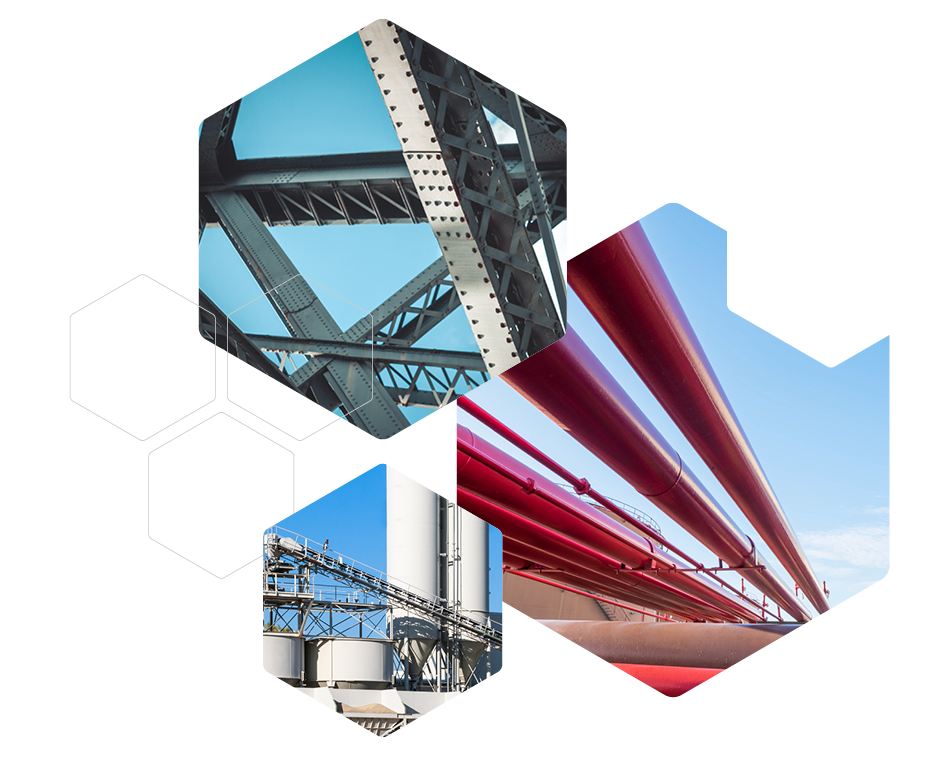Steel and cement are responsible for around half of all industrial greenhouse gas emission and nearly 14 percent of emissions worldwide.
Growing global population and urbanization trends are key drivers increasing demand for steel and cement in both the construction and transport industries. Advancements in technology are pivotal in mitigating the effects of climate change, by optimizing material use, improving production processes and adopting alternative fuels.
Explore technologies
Have you initiated contacts or technological transfer agreements?
The Green Technology Book is a free resource, but please help us by letting us know if you have initiated contacts or technological transfer agreements or similar as a result of the book.
Do you want to find more technologies and become part of the solution?
Find more technologies in the Green Technology Book Collection in the WIPO GREEN Database. Register and upload your technology and be part of the solution.
Ghoneim, R., G. Mete and A. Hobley (2022). Steel and cement can drive the decade of action on climate change: This is how. United Nations Industrial Development Organization (UNIDO), ‘Industrial Analytics Platform’. Available at: https://iap.unido.org/articles/steel-and-cement-can-drive-decade-action-climate-change-how [accessed May 2023].
Lehne, J. and F. Preston (2018). Making concrete change: Innovation in low-carbon cement and concrete. London: Chatham House. Available at: https://www.chathamhouse.org/sites/default/files/publications/research/2018-06-13-making-concrete-change-cement-lehne-preston.pdf
Kim, J., et al. (2022). Decarbonizing the iron and steel industry: A systematic review of sociotechnical systems, technological innovations, and policy options. Energy Research & Social Science, 89, 102565.
Material Economics (2019). Industrial transformation 2050: Pathways to net-zero emissions from EU heavy industry (executive summary), Net Zero 2050 (Executive summary), Cambridge: University of Cambridge Institute for Sustainability Leadership (CISL). Available at: https://europeanclimate.org/wp-content/uploads/2019/11/25-04-2019-industrial-transformation-2050-executive-summary.pdf
Brogan, C. (2022). ‘Greening’ cement and steel: 9 ways these industries can reach net zero. London: Imperial College. Available at: www.imperial.ac.uk/news/235134/greening-cement-steel-ways-these-industries [accessed May 2023].
Bataille, C., S. Stiebert and F.G.N. Li (2021). Global facility level net-zero steel pathways. Paris: The Institute for Sustainable Development and International Relations (IDDRI). Available at: http://netzerosteel.org/wp-content/uploads/pdf/net_zero_steel_report.pdf
IPCC (2022). Climate change 2022: Mitigation of climate change – Full report, Working Group III contribution to IPCC sixth assessment report. Cambridge, UK: Intergovernmental Panel on Climate Change (IPCC). Available at: https://www.ipcc.ch/report/sixth-assessment-report-working-group-3/
Arens, M., M. Åhman and V. Vogl (2021). Which countries are prepared to green their coal-based steel industry with electricity? – Reviewing climate and energy policy as well as the implementation of renewable electricity. Renewable and Sustainable Energy Reviews, 143, 110938.
Vogl, V., M. Åhman and L.J. Nilsson (2018). Assessment of hydrogen direct reduction for fossil-free steelmaking. Journal of Cleaner Production, 203, 736–45.
Arens, M., M. Åhman, and V. Vogl (2021). Which countries are prepared to green their coal-based steel industry with electricity? - Reviewing climate and energy policy as well as the implementation of renewable electricity. Renewable and Sustainable Energy Reviews, 143, 110938.
Zero Waste Europe (2020).
VDZ (2021).
Hites, B. (2020). The growth of EAF steelmaking. Recycling Today. Available at: https://www.recyclingtoday.com/article/the-growth-of-eaf-steelmaking/ [accessed May 2023].
Wang, P.,
Marmier, A. (2023).
Hann, S. (2022).
Global CCS Institute (2022). 2022 Status report: Appendices. Available at: https://status22.globalccsinstitute.com/2022-status-report/appendices/ [accessed May 2023]
Fennell, P.,
Freitag, C.,
Marmier, A. (2023).
Probst, B.,
IP Australia (2022). Low emission steel, aluminium and iron ore. Available at: https://app.powerbi.com/view?r=eyJrIjoiNGMyYjE0NjItYzcxNy00NzViLWExYjEtZGE0YjZkYzIxOGUxIiwidCI6IjljMGNlZDQ5LTRlMzYtNGY4MS1iOGQ3LTEwYzRhMGNiZmYyZCJ9 [accessed May 2023].
Lehne, J. and F. Preston (2018). Making concrete change: Innovation in low-carbon cement and concrete. London: Chatham House. Available at: https://www.chathamhouse.org/sites/default/files/publications/research/2018-06-13-making-concrete-change-cement-lehne-preston.pdf
ECOS (2023).
IEA (2019).
IP Australia (2022). Carbon capture and storage. Available at: https://app.powerbi.com/view?r=eyJrIjoiYjE1MDI2Y2ItY2Q0NC00NjUwLWE1NmYtODA4Njg0MTkzMjA4IiwidCI6IjljMGNlZDQ5LTRlMzYtNGY4MS1iOGQ3LTEwYzRhMGNiZmYyZCJ9 [accessed May 2023].
Xie, H.,
IP Australia (2021).
IP Australia (2021).
European Patent Office (2020). Fourth industrial revolution. Available at: https://www.epo.org/news-events/in-focus/ict/fourth-industrial-revolution.html [accessed May 2023].
UNCTAD (2022). What is ‘Industry 4.0’ and what will it mean for developing countries? United Nations Conference on Trade and Development (UNCTAD). Available at: https://unctad.org/news/blog-what-industry-40-and-what-will-it-mean-developing-countries [accessed May 2023].
IP Australia (2018).
IP Australia (2019).
IP Australia (2018).
IP Australia (2019).
Probst, B.,
CPI (2022).
Wood Mackenzie (2022). Pedal to the metal: Iron and steel’s US$1.4 trillion shot at decarbonisation.
Maltais, A.,
McKinsey (2020).
Gardner, T. (2023). US announces $6 bln in grants to decarbonize heavy industry.
UNEP FI (2023).
Maltais, A.,
Bataille, C., S. Stiebert, and F.G.N. Li (2021). Global facility level net-zero steel pathways. Paris: The Institute for Sustainable Development and International Relations (IDDRI). Available at: http://netzerosteel.org/wp-content/uploads/pdf/net_zero_steel_report.pdf
Bataille, C., S. Stiebert, and F.G.N. Li (2021). Global facility level net-zero steel pathways. Paris: The Institute for Sustainable Development and International Relations (IDDRI). Available at: http://netzerosteel.org/wp-content/uploads/pdf/net_zero_steel_report.pdf
OECD (2021).
CPI (2022).
CPI (2022).
DNV (2023). Green steel assurance. Det Norske Veritas (DNV). Available at: https://www.dnv.com/services/green-steel-assurance-232895 [accessed May 2023].
Net Zero Insights (2023). An overview of the green steel startups and initiatives. Available at: https://netzeroinsights.com/resources/market-insights/green-steel-startups-funding-landscape/ [accessed May 2023].
Maltais, A.,
Chaudhary, A. (2022). India planning carbon credit market for energy, steel and cement. The Economic Times. Available at: https://economictimes.indiatimes.com/industry/renewables/india-planning-carbon-credit-market-for-energy-steel-and-cement/articleshow/93297031.cms?from=mdr [accessed May 2023].
UNEP FI (2023).
OECD (2022).
GIZ (2021).
See Notes here







